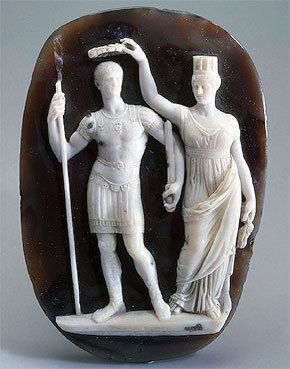130,000 165,000 Date 3 July 324 AD Location Hadrianopolis | Unknown 34,000 dead Result Constantinian victory | |
 | ||
Similar Battle of Chrysopolis, Battle of the Hellespont, Battle of Cibalae, Roman civil war of 350–351, Battle of the Milvian Bridge | ||
Battle of adrianople 324
The Battle of Adrianople was fought on July 3, 324 during a Roman civil war, the second to be waged between the two emperors Constantine I and Licinius; Licinius suffered a heavy defeat.
Contents
- Battle of adrianople 324
- Total war history battle of adrianople part 4 4
- Background
- Battle
- Aftermath
- References
Total war history battle of adrianople part 4 4
Background
Constantine had, in a previous war (in 316), defeated Licinius at the Battle of Cibalae and conquered from him all the Balkan Peninsula, with the exception of Thrace. A peace had been arranged but the relationship between the two emperors remained uneasy. By 324 Constantine was ready to renew the conflict and when his army, in pursuit of a raiding Visigothic, or possibly Sarmatian, force, crossed into Licinius' territory an opportune casus belli was created. The reaction of Licinius to this incursion was overtly hostile and this induced Constantine to go on to the offensive. Constantine invaded Thrace in force; his army was smaller than that of Licinius, but it contained many battle-hardened veterans and, as he had control of the Illyrian region, the finest quality of new recruits.
Battle
Licinius encamped his army at Adrianople (Hadrianopolis), the major city of inland Thrace. Constantine advanced eastward from Thessalonica until he came to the Hebrus River, on which Adrianople stands, and set up his own camp. Licinius arranged his battle line, of 200 stades in length, in a strong position between a height overlooking the town and the confluence of the Hebrus with a tributary. The two armies remained in position for a number of days before battle was joined, as both sides were reluctant to chance the crossing of the river against a well-prepared and battle-arrayed enemy.
Eventually, Constantine used a ruse to get his troops across the Hebrus. Having noticed a suitable crossing point where the river narrowed and was overlooked by a wooded hillside, he ordered material and ropes to be conspicuously assembled at another place on the river, well away from his chosen crossing, to give the impression that he intended to build a bridge to cross there. On the wooded hillside he secretly assembled 5,000 foot archers and a force of cavalry. He then led his cavalry over the river crossing at the narrows and fell on the enemy unexpectedly. The surprise attack was a complete success and the remainder of his army then crossed at the same point. What followed, in the words of the historian Zosimus, was "a great massacre": Licinius' army lost about 34,000 dead.
During the onslaught Constantine directed the guard of his overtly Christian standard, the labarum, to move it to any part of the field where his troops seemed to be faltering. The appearance of this talisman emboldened his own troops and dismayed those of Licinius. Constantine, who had been slightly wounded in the thigh, halted his attack at sunset and darkness allowed Licinius and the remains of his force to withdraw to Byzantium, the coast, and the safety of his fleet. The battle was one of the largest of the 4th century.
Aftermath
Constantine's effort to start a civil conflict proved successful, as did his campaign against Licinius. Following the battle at Adrianople, Constantine moved to besiege Byzantium. At this point in the campaign, control of the narrow waters separating Thrace and Asia Minor became of the utmost importance to both emperors. Constantine's son Crispus commanded his navy in a struggle with the larger fleet of Licinius. Following Crispus' naval victory in the waters of the Hellespont, Constantine crossed with his army into Bithynia. He met Licinius' army in the final battle of the war at Chrysopolis on the Asiatic shore of the Bosporus. Constantine won an overwhelming victory. Initially, yielding to the pleas of his sister Constantia, Constantine spared the life of his brother-in-law, but some months later he ordered his execution thereby breaking his solemn oath. Licinius was suspected of treasonable actions and the army command pressed for his execution. A year later, Constantine's nephew the younger Licinius also fell victim to the emperor's anger or suspicions. Constantine became the first man to be master of the entire Roman world since the elevation of Maximian as co-emperor by Diocletian in 285.
